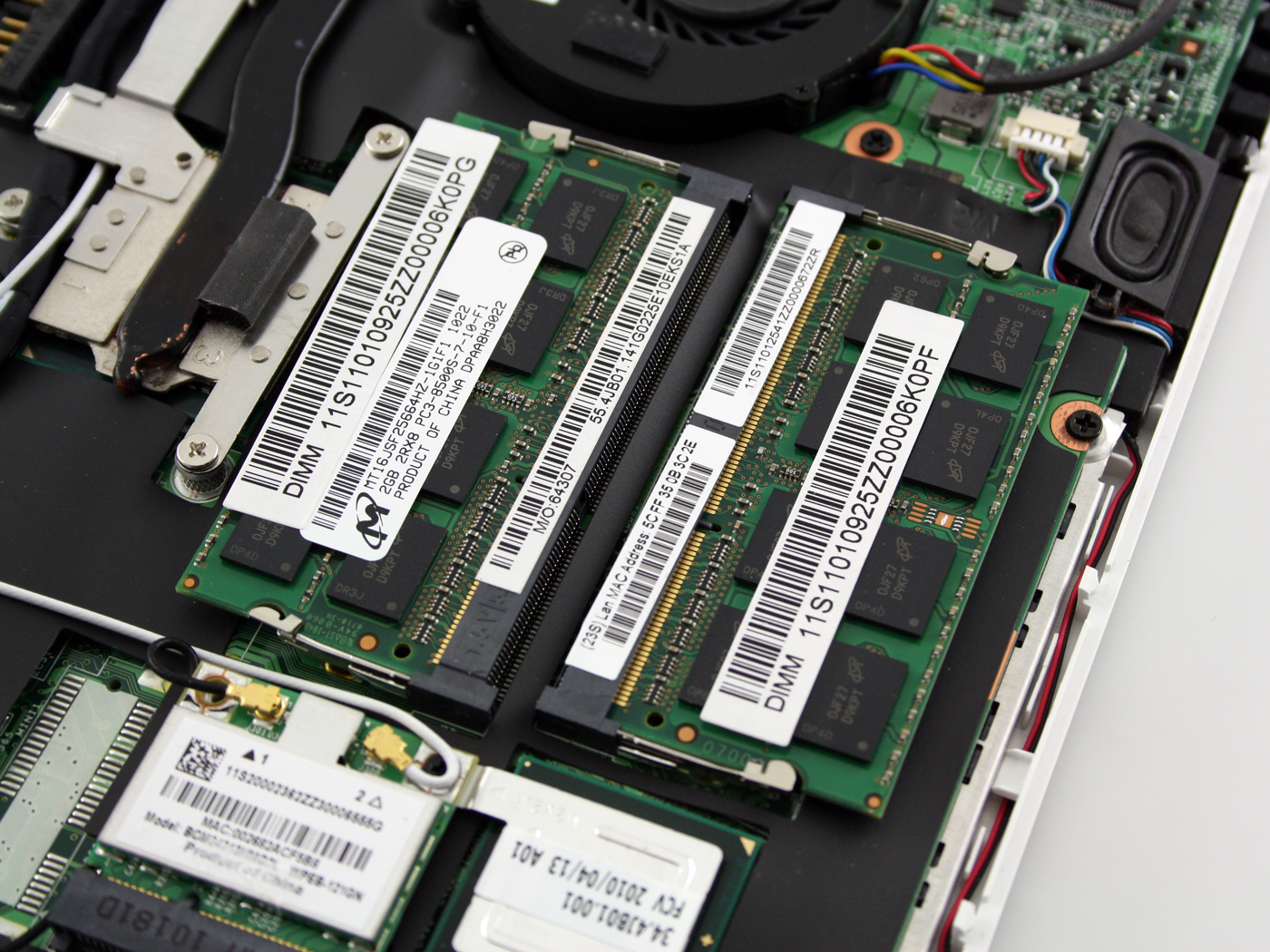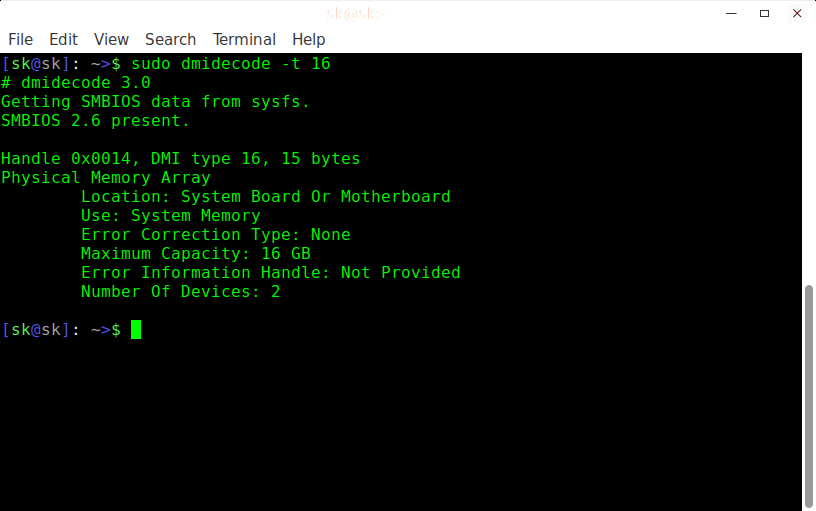Linux Show Memory Slots Available
Jun 04, 2015 For more information on Linux memory management, it is recommended to learn how Linux memory management works. Also, you can refer the book Understanding how the Linux Virtual Memory Manager Works available on www.kernel.org. To see current system memory usage on Cisco IOS XE, use the show platform software status control-processor brief command. Apr 02, 2019 You can see how much memory is available next to the Available label. Find how much RAM is installed and available in Windows Vista and 7. From the desktop or Start menu, right-click on Computer and select Properties. In the System Properties window, the system will list 'Installed memory (RAM)' with the total amount detected.
- Linux Memory Free Available
- Memory Available Gb Linux
- Memory Slots Available
- Linux Check Available Memory

- Nov 21, 2009 shows the number of memory slots. Just deduct the number of used slots then you’ll find the remaining available unused slots. To find out which slot is being used by memory cards installed, use this command: wmic memorychip get capacity, devicelocator.
- Feb 01, 2018 How to Check Number of RAM Slots Available in Laptop or PC (Easy) MJ Tube. I'll Show You How. No Boot Media Required! Single vs Dual Channel Memory - Duration: 5:25.
To check how much RAM is installed and available on your computer, follow the steps below.
NoteMemory (RAM) and hard drive space are two completely different things. If you want to know how much information you can store on your computer, see the how to determine how much hard drive space page.
TipSee our determining the type of memory my computer has page if you are trying to find memory specifications for upgrading your computer memory.
Find how much RAM is installed and available in Windows 8 and 10
- From the Start screen or Start menu type ram
- Windows should return an option for 'View RAM info' Arrow to this option and press Enter or click it with the mouse. In the window that appears, you should see how much installed memory (RAM) your computer has.
If a memory chip is not being recognized by the computer, it is not included in the amount of memory listed under 'Installed memory (RAM)' in the System Properties window.
View used and available resources
To determine the amount of available system resources, including memory, as well as what is currently being utilized, open the Task Manager. On the Processes tab, you can see which programs are running and using resources. On the Performance tab, you can see an overall picture of all the system resources. You can see how much memory is available next to the Available label.
Find how much RAM is installed and available in Windows Vista and 7
- From the desktop or Start menu, right-click on Computer and select Properties.
- In the System Properties window, the system will list 'Installed memory (RAM)' with the total amount detected. For example, in the picture below, there is 4 GB of memory installed in the computer.
If a memory chip is not being recognized by the computer, it is not included in the amount of memory listed under 'Installed memory (RAM)' in the System Properties window.
or
- Click Start
- In the Search box, type 'ram' without quotes and click the Show how much RAM is on this computer.
or
- Click Start
- Click System and Security
- Under System, click View amount of RAM and processor speed.
View used and available resources
To determine the amount of available system resources, including memory, as well as what is currently being utilized, open the Task Manager. On the Processes tab, you can see which programs are running and using resources. On the Performance tab, you can see an overall picture of all the system resources. You can see how much memory is available next to the Available label.
Finding RAM information in Windows 95, 98, ME, NT4, 2000, and XP
- Double-click the Systems icon.
- On the General tab, the amount of RAM currently installed and detected will be listed.
If a memory chip is not being recognized by the computer, it is not included in the amount of memory listed under 'Installed memory (RAM)' in the System Properties window.
or
Windows 98, ME, 2000, and XP users can also run the System Information (msinfo32) program that comes pre-installed on the computer. For additional information about this program, see our msinfo32 definition.
View used and available resources
To determine the amount of available system resources, including memory, as well as what is currently being utilized, open the Task Manager. On the Processes tab, you can see which programs are running and using resources. On the Performance tab, you can see an overall picture of all the system resources. You can see how much memory is available next to the Available label.
Find how much RAM is installed and available in Windows 3.x
Click File and then Exit Windows and follow the steps below for determining memory in MS-DOS.
Find how much RAM is installed and available in MS-DOS
NoteThese instructions are for early versions of Windows and MS-DOS. If you are running a Windows command line, the mem command is no longer supported.
Type mem at the MS-DOS prompt and press Enter.
NoteMS-DOS 6.2 will not accept or recognize more than 64 megabytes of RAM when typing mem.
- See the mem command page for further information about this command.
Find how much RAM is installed and available with Apple computer's
Click About this Mac in the Apple menu on macOS X to determine how much RAM is installed on an Apple Mac computer. The picture shows an example of the Apple Menu. As can be seen in the picture, the About This Mac is the first option.
In the About This Mac window that appears, you are shown how much memory your computer has.
Finding RAM information in Linux and Unix
Linux and Unix command line users can use top command, which displays the total memory detected by the computer, how much memory is used, and how much is free.
Using the free command also gives you an overview of memory, including how much of the memory is stored in the buffers.
Additional information
- See the RAM and memory definition for further information about each of these terms and related links.
Linux is one of the most popular open source operating system and comes with huge set of commands. The most important and single way of determining the total available space of the physical memory and swap memory is by using “free” command.
The Linux “free” command gives information about total used and available space of physical memory and swap memory with buffers used by kernel in Linux/Unix like operating systems.
This article provides some useful examples of “free” commands with options, that might be useful for you to better utilize memory that you have.
1. Display System Memory
Free command used to check the used and available space of physical memory and swap memory in KB. See the command in action below.
2. Display Memory in Bytes
Free command with option -b, display the size of memory in Bytes.
3. Display Memory in Kilo Bytes
Free command with option -k, display the size of memory in (KB) Kilobytes.
4. Display Memory in Megabytes

To see the size of the memory in (MB) Megabytes use option as -m.
5. Display Memory in Gigabytes
Linux Memory Free Available
Using -g option with free command, would display the size of the memory in GB(Gigabytes).
6. Display Total Line
Free command with -t option, will list the total line at the end.
7. Disable Display of Buffer Adjusted Line
By default the free command display “buffer adjusted” line, to disable this line use option as -o.
Memory Available Gb Linux
8. Display Memory Status for Regular Intervals
The -s option with number, used to update free command at regular intervals. For example, the below command will update free command every 5 seconds.
9. Show Low and High Memory Statistics
The -l switch displays detailed high and low memory size statistics.
Memory Slots Available
10. Check Free Version
The -V option, display free command version information.
Read Also
Linux Check Available Memory
Top Command, Find Command, Netstat Command.
Thisparticular bonus is granted to all the new players that have justarrived at the casino and decided to join the ranks of active players.Although you would have to meet the wagering requirements, it still candouble or even triple the amount you have spent.' Monthly Bonus', also called the Reload Bonus, may provide youwith extra chips every time you make a regular deposit. 